We thank Fr. Felice Ruffini who once again has helped to enrich Camillian iconography!
By Fr. Felice Ruffini
It is a fine and thrilling thing to find, in the heart of Paris, a chapel dedicated to our St. Camillus in an ancient church, namely ‘Saint Joseph des Carmes’ which is at n. 70 di Rue de Vaugirard. This was ‘unearthed’ following a faint trace found in an edition of Domesticum of 1931, a historical review that was published by the Camillian Order.
The spectacular and elegant stained glass window which has been put as a ‘logo’ for this page, with the prayer ‘Saint Camille priez pour nous’, tells us that in this holy place there has for some time been special devotion to the Patron Saint of the Sick. On the altar there reigns, finely exhibited, a splendid canvas of S. Filippo who is confiding to St. Camillus that he had seen angels suggest words to his religious while they were caring for a dying man. This is signed ‘An. Sublet 1856’. This is the same theme as the icon by Sebastiano Conca which was painted for the beatification of St. Camillus of 1742 and placed on the left wall of the chapel of the tomb of St. Camillus in Rome in the Church of St. Mary Magdalene.
The first stone of the Church of ‘Saint Joseph des Carmes’ was laid in 1613 by Queen Mary Medici, the widow of Henry VI who had been assassinated in 1610. During the revolution it became in the month of August 1792 a prison for 110 priests who were massacred on the following 2 September in the nearby garden. The mortal remains of these martyrs are kept in the crypt. The church and the convent fell into wrack and ruin.
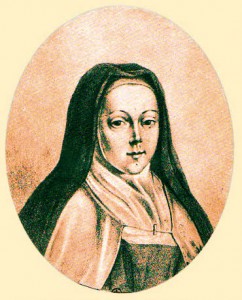 After the storm had passed, in 1797 the Marchioness ‘Camille de Soyecort’ (1757-1849) – who had entered the Carmelite Order at the age of twenty-four and obtained a special dispensation to be able to use her large inheritance to do this – began the restoration work of the convent and the church when a community of women Carmelites returned to that place. In 1845 everything was given to the Archbishop of Paris who at this location founded and established the ‘Ecole des Hautes Etudes Ecclésiastiques’ which for a short time was known as the ‘Institut Catholique de Parìs’. In the crypt, near to the relics of the martyrs of the revolution, ‘Mére Camille’ also rests in a sober sepulchre of earth covered with a stone slab. Nearby there is also the tomb of Federico Ozanam, a professor at the Sorbonne who at the age of twenty founded the ‘Conférences Saint Vincent de Paul’. The son of a Napoleonic officer, he was born in Milan in 1813 and returned to France with his family after the Battle of Waterloo. He then joined the Catholic intellectual circles that gathered around the physicist André-Marie Ampère and Emmanuel Bailly. He died on 8 September 1853 at the age of only forty and was beatified in Paris on 27 August 1997 by St. John Paul II.
After the storm had passed, in 1797 the Marchioness ‘Camille de Soyecort’ (1757-1849) – who had entered the Carmelite Order at the age of twenty-four and obtained a special dispensation to be able to use her large inheritance to do this – began the restoration work of the convent and the church when a community of women Carmelites returned to that place. In 1845 everything was given to the Archbishop of Paris who at this location founded and established the ‘Ecole des Hautes Etudes Ecclésiastiques’ which for a short time was known as the ‘Institut Catholique de Parìs’. In the crypt, near to the relics of the martyrs of the revolution, ‘Mére Camille’ also rests in a sober sepulchre of earth covered with a stone slab. Nearby there is also the tomb of Federico Ozanam, a professor at the Sorbonne who at the age of twenty founded the ‘Conférences Saint Vincent de Paul’. The son of a Napoleonic officer, he was born in Milan in 1813 and returned to France with his family after the Battle of Waterloo. He then joined the Catholic intellectual circles that gathered around the physicist André-Marie Ampère and Emmanuel Bailly. He died on 8 September 1853 at the age of only forty and was beatified in Paris on 27 August 1997 by St. John Paul II.
The brochure that I acquired, Saint Joseph des Carmes, published in our times, is keen to emphasise that ‘La dedicace actuelle de cette Chapelle (Saint Camille) est récent. Elle était à l’origine dédiée à Saint Jean-Baptiste et saint Albert’ since 1628. But the dedication of the chapel to the patron saint of ‘Marchesina Mére Camille’ was not only an act of gratitude to her for giving over all of her possessions for the restoration of this sacred place. One may observe that the very fine painting was painted in 1856, that is to say seven years after ‘Mére Camille’ had gone to meet her Creator!
Rapid research carried out in order to understand whether this link and connection were only due to the fact that she had received the name ‘Camille’ at her baptism produced an interesting letter by a certain ‘M. l’Abbé de la Blandinière’ who, when writing to send his best wishes on 18 July 1792, the feast day of St. Camillus, wrote, with the threatening developments of the revolution then underway,
‘Your patron saint is the saint of the dying and as such he must be prayed to with greater piety during these moments in which we find ourselves, because everything is
dying here with us.: France, the monarchy, the nobility, the clergy, the religious Orders, everything, even the women Carmelites…It is your task, my dear daughter, to draw advantage from the credit of your patron saint; it is your task to pray to him constantly, asking him to act for so many kinds of dying and dying people who are so much in need of help…Your patron saint, who accompanied so many lives of dying men, will not allow his holy career to finish so quickly’.
We do not have information on the choice of the subject by Benoît-Antoine Sublet (1821-1897) but we do know that he went to Rome where for a certain time he worked as a ‘copy painter’ for Charles Soulacroix (1825-1899), the brother of Amelia Soulacroix (1820-1896) who married Federico Ozanam on 23 June 1841. The presence of a work by this painter in the Church of St. Louis of the French, which is not very far away from the Church of St. Mary Magdalene, leads us to think that Benoît Sublet was in the neighbourhood and must have visited the chapel of our St. Camillus and been inspired by the painting by Conca when he produced his work in Paris.
Especial thanks go to Miss Paola Pagani, the correspondent in Italy of the Foundation Raoul Follereau’, who set in motion the splendid cooperation with Mrs Nicole de Monts in Paris who made herself available when Miss Pagani at the beginning of December went to the international offices of this ‘Foundation’ which is located a few hundred metres from the ‘Eglise Saint Joseph des Carmes’. She also made available a rich series of photographs and various specific publications.
You are now invited to go to the page dedicated to the pictures of this wonderful work venerated in the ‘Chapelle Saint Camille dans l’Eglise Saint Joseph des Carmes’ in Paris. (Fr. Felice Ruffini)


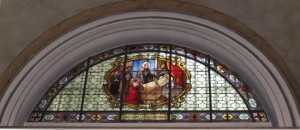
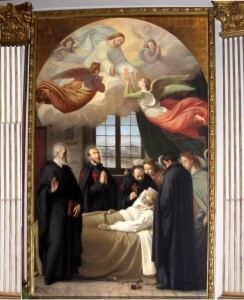






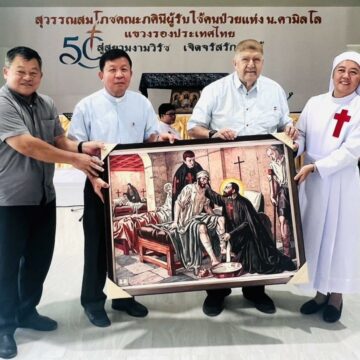
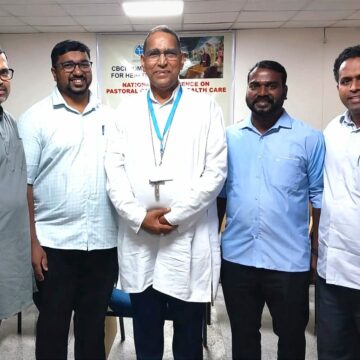


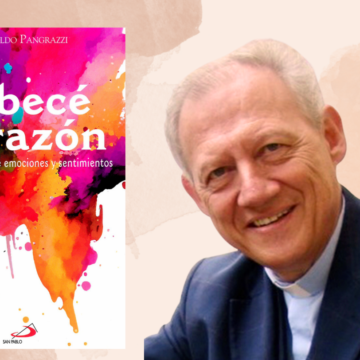
Camillians on Facebook
Camillians on Twitter
Camillians on Instagram